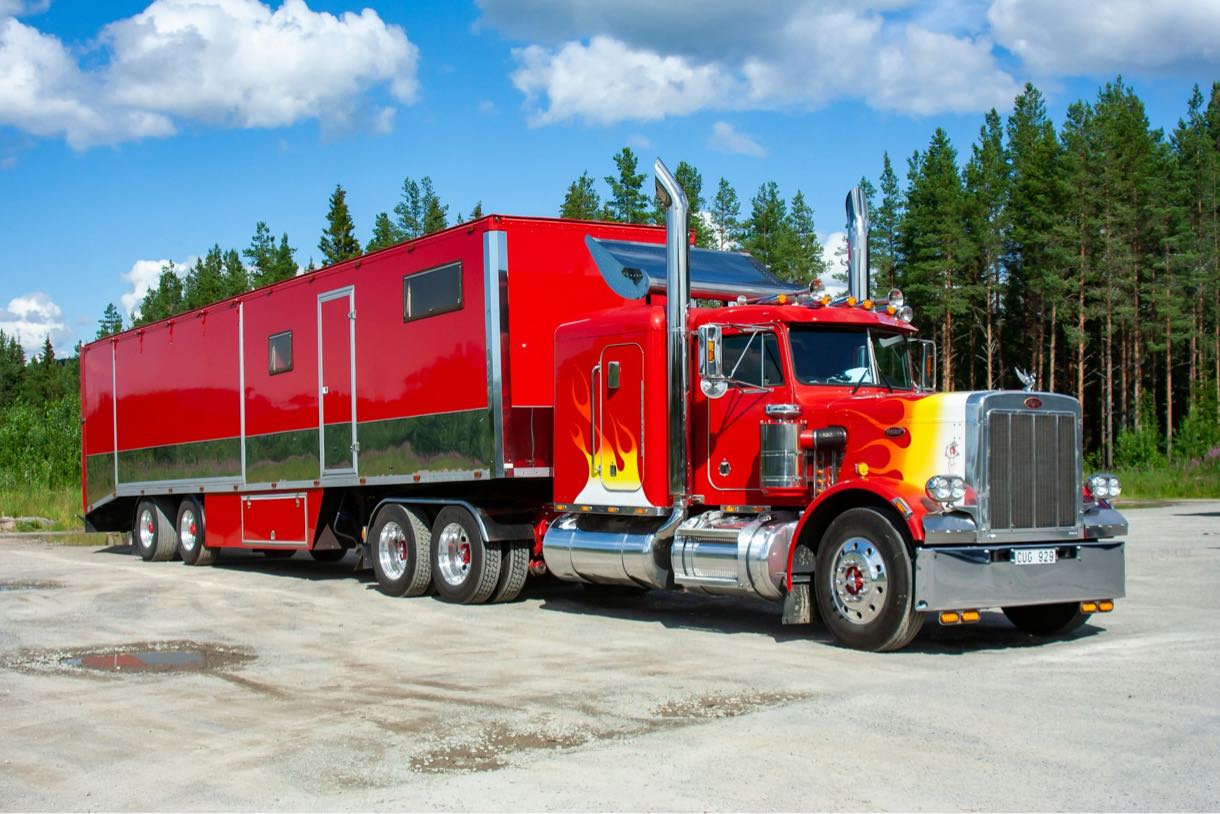Car carrier ships are unsung heroes in the huge and complex world of marine transportation, connecting continents and boosting economies. These customized ships are a wonder of engineering and logistics since they were created specifically for the transporting of wheeled vehicles. As vehicles are figuratively rolled on and off the ships, they are a subset of RoRo (Roll-On, Roll-Off) boats, a word that captures the fundamental heart of their performance.
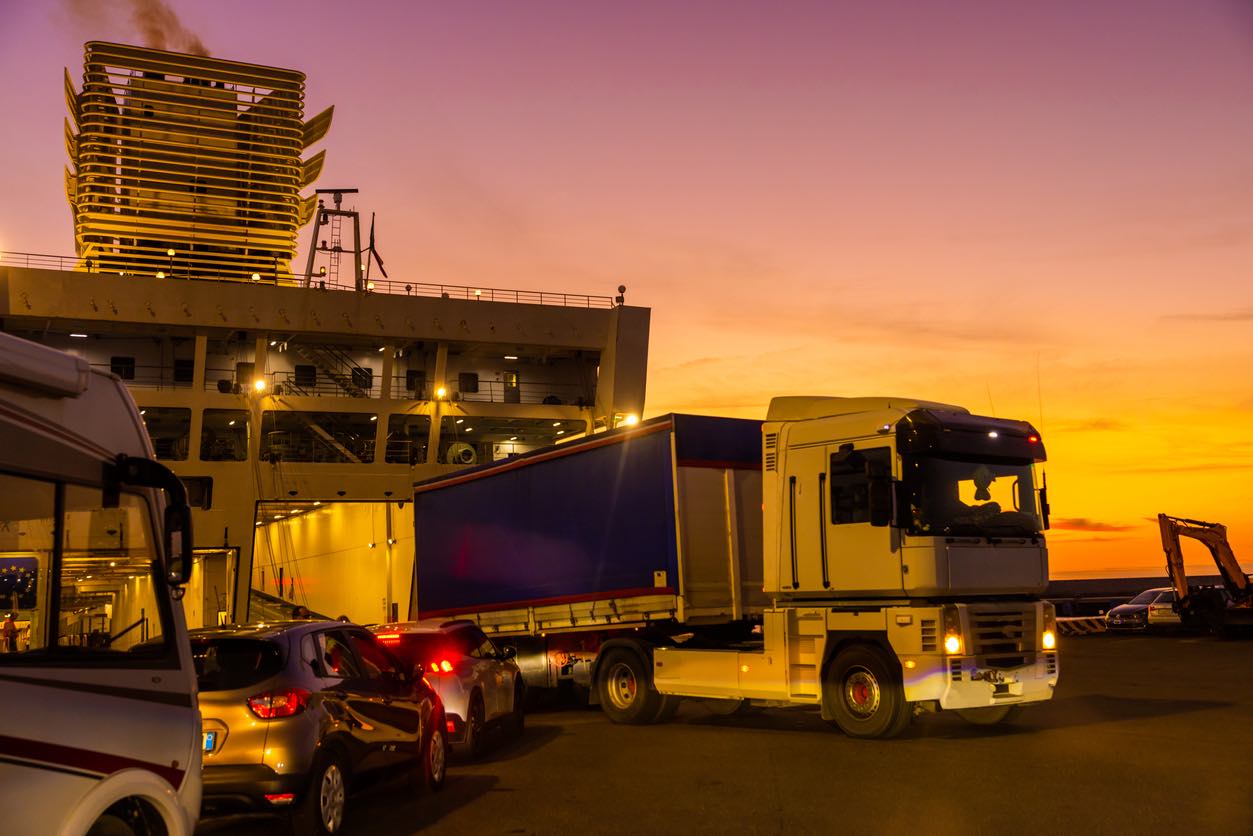
Car carriers are essential to the world’s automotive industry. These ships are essential for delivering anything from new cars from production centers to global markets to old cars, buses, trucks, and even military tanks. They help firms connect with customers across seas, enhancing the vibrancy and interdependence of the world economy.
Car carriers fit within the wider category of RoRo ships, or Roll-On, Roll-Off boats. The phrase “Roll-On, Roll-Off” conjures up an accurate image of how cargo is transported into and off of these ships. Due to its distinct design, which includes ramps and specialized decks, RoRo ships enable vehicles to be driven on and off the ship, in contrast to regular cargo carriers, where cargo is hoisted by cranes.
This blog article seeks to explore the interesting world of automobile carriers, including their numerous varieties, cutting-edge design, capacity, and historical development. It’s a tour into a part of marine transportation that is essential to our contemporary way of life but is sometimes overlooked. We’ll explore the subtleties that make these ships an essential link in international transportation, from the elegant Pure Car Carriers (PCC) to the adaptable Pure Car Truck Carriers (PCTC).
Join us as we explore the complete guide to car carrier ships, the ships that discreetly and effectively guarantee that automobiles reach their destinations and power the wheels of global trade, as we cruise the oceans.
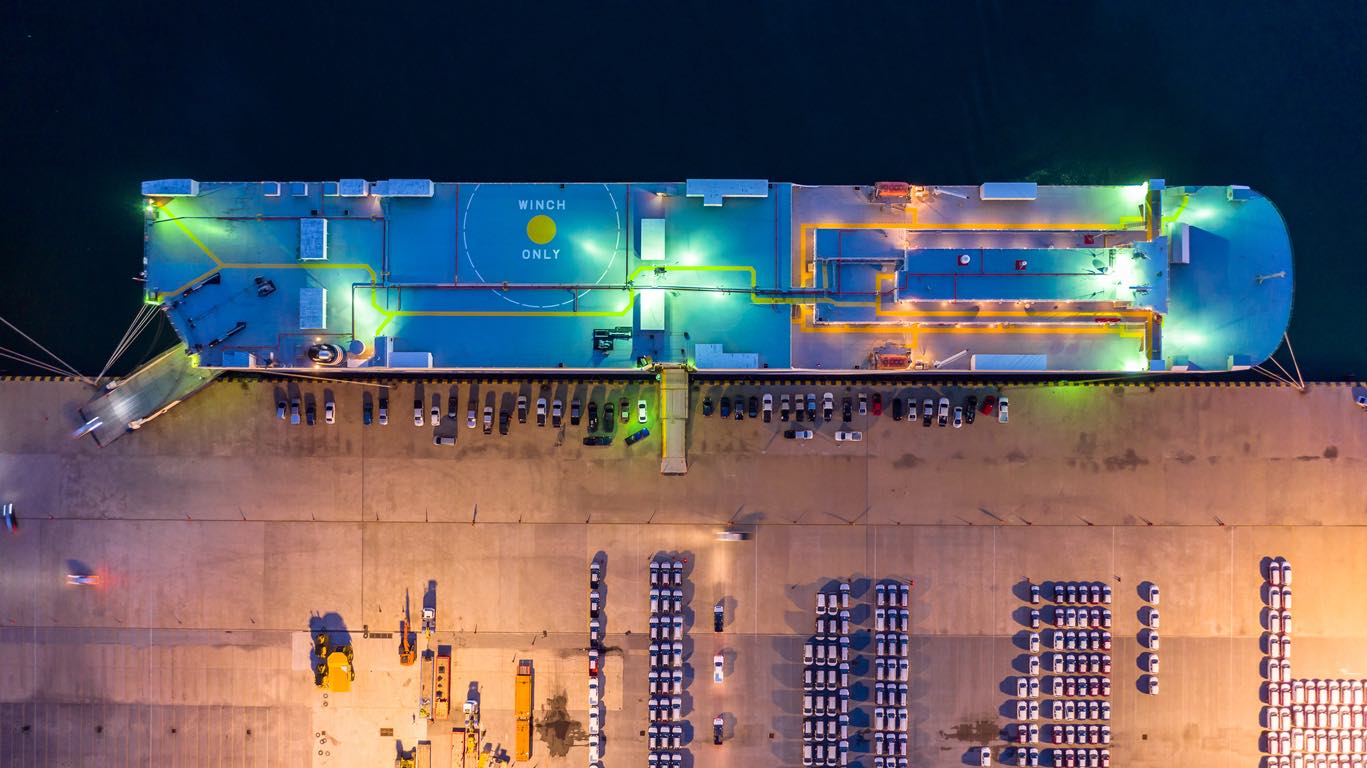
Each vehicle carrier ship is tailored to fulfill a particular transportation demand, making up a diverse and versatile group. Under the wider umbrella of “RoRo ships,” they include a variety of boat types, each with particular features and purposes. Let’s look more closely at these categories.
The Pure Car Carrier, abbreviated as PCC, is a vessel used exclusively to transport cars. These ships are typically employed to move new vehicles from manufacturing hubs to their destination markets. For example, Japanese cars destined to be sold in the United Kingdom might be transported on a PCC.
PCCs are designed with multiple decks to accommodate a large number of cars. The absence of other types of cargo allows for optimization of space, ensuring that as many vehicles as possible can be transported efficiently.
The Pure Car Truck Carrier, or PCTC, is a more versatile vessel, capable of transporting various types of four-wheeled cargo. These could include new cars, trucks, tractors, and other plant machinery. PCTCs are essential for markets that require diverse automotive transportation.
PCTCs are equipped with adjustable decks, allowing for the accommodation of different vehicle heights. This flexibility makes them suitable for a wide range of wheeled cargo, from compact cars to tall trucks.
Container Ship and RoRo Ship (ConRo): The Hybrid Solution
The ConRo vessel is a combination of both a traditional container ship and a RoRo ship. These ships are designed to carry both shipping containers and wheeled cargo, offering a multifaceted transportation solution.
ConRo ships feature designated areas for containers and specialized decks for wheeled cargo. This dual functionality allows for the simultaneous transportation of various goods, maximizing efficiency.
GenRo vessels are a combination of a regular cargo ship and a RoRo ship but are generally smaller in size and capacity than ConRo ships. They carry general cargo and wheeled cargo, serving markets that require mixed transportation.
GenRo ships are designed to balance the needs of general cargo and wheeled vehicles. Their smaller size makes them suitable for routes that may not require the larger capacity of a ConRo ship.
The RoPax ship is a vessel that transports cars and other small vehicles but also allows for passengers onboard. In essence, it’s a ferry, providing transportation for both vehicles and people across shorter distances.
RoPax ships are equipped with passenger amenities and are designed to facilitate the quick loading and unloading of vehicles. They are commonly used for inter-island or cross-river transportation.
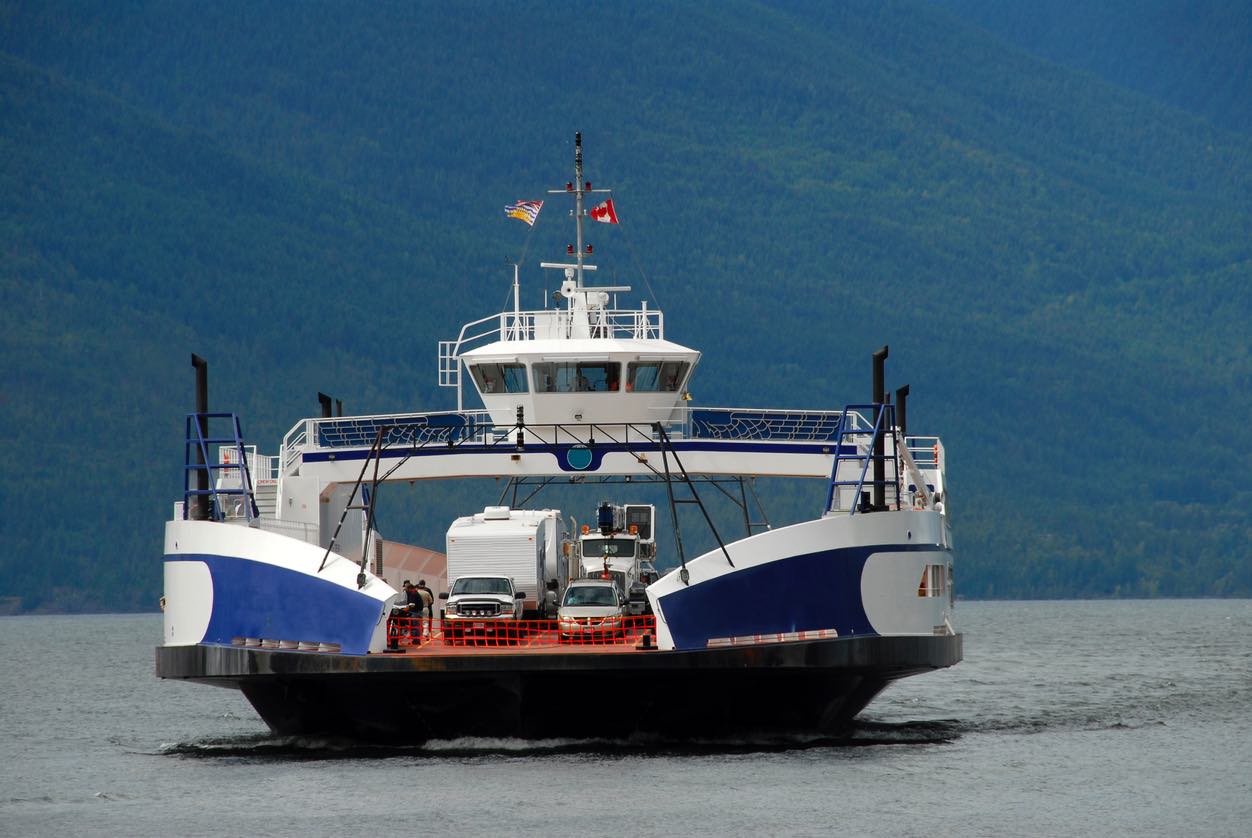
A wonder of engineering, automobile carrier ships are built specifically to meet the demands of transporting wheeled cars. Car carriers require a special approach to loading and unloading as well as interior design, unlike conventional cargo ships. Let’s examine these features in further depth.
The Need for Ramps: While shipping containers are loaded and unloaded onto cargo or container ships using cranes or derricks, and chemicals are transferred using a system of pipes, car carriers require a different method. The key to their functionality lies in ramps.
Ramp Locations: These ramps may be located at various strategic points on the vessel, including the stern (back), bow (front), or even the sides of the ship. The placement of ramps ensures smooth and efficient loading and unloading operations.
The Process: The ramps allow the cargo, whether cars, trucks, or other vehicles, to be easily driven onto the ship and then off again at the destination port or terminal. This method minimizes handling and reduces the risk of damage to the vehicles.
Multiple Decks: Car carriers are equipped with multiple decks to accommodate the large number of vehicles. These decks are often adjustable, allowing for customization based on the size and type of vehicles being transported.
Internal Ramps: In addition to external ramps, car carriers often feature ramps inside the vessel and hoistable car decks. These internal features enable vehicles to be driven between different levels of the ship, maximizing space utilization.
Optimization for Different Vehicles: The interior design allows for the transportation of various types of vehicles, from standard passenger cars to larger trucks and machinery. The adjustable decks and internal ramps provide the flexibility needed to cater to different transportation needs.
Combination of Passengers and Vehicles: RoPax vessels, essentially ferries, have a unique design that accommodates both passengers and vehicles. They are equipped with passenger amenities and are designed for quick turnaround times, facilitating frequent short-distance travel.
Design for Efficiency: RoPax vessels are designed for efficiency, with features that enable quick loading and unloading of vehicles and passengers. They often operate on routes such as inter-island or cross-river transportation, where speed and convenience are paramount.
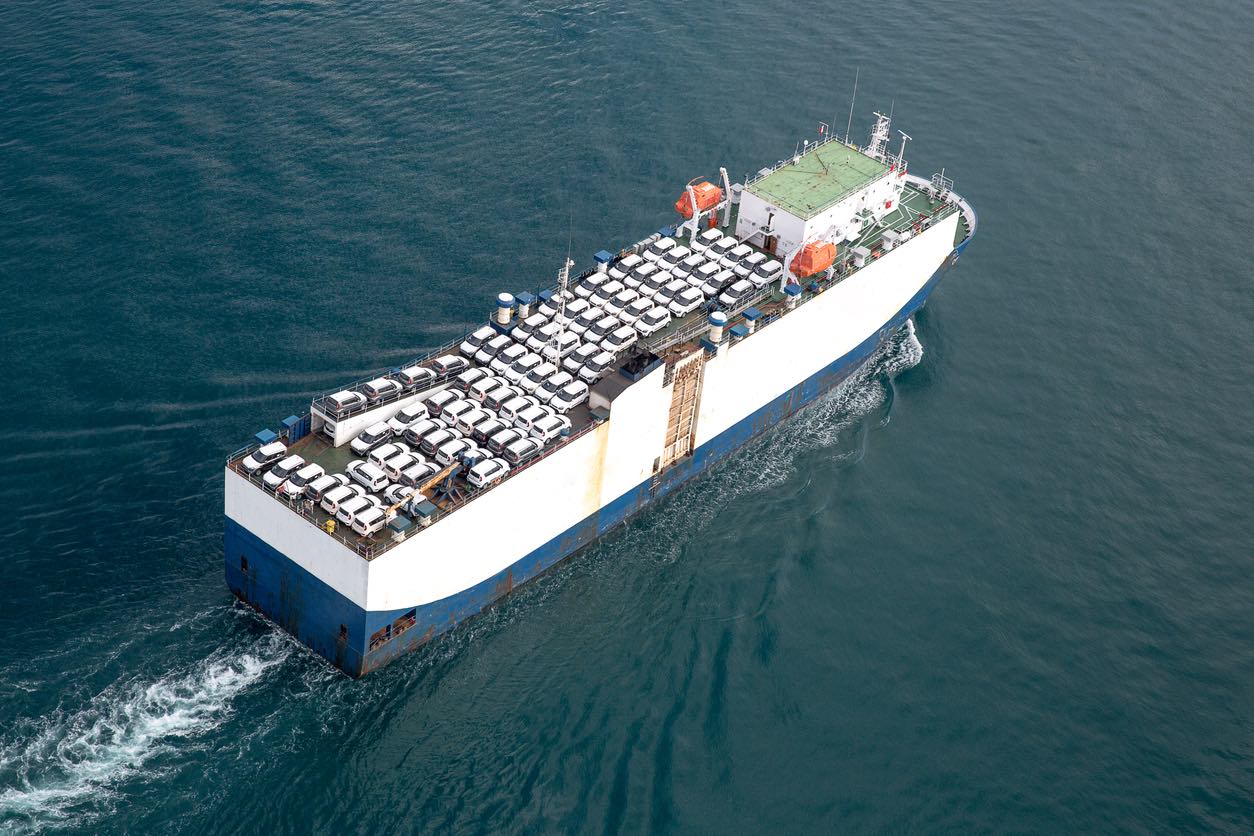
A car carrier ship’s capacity, which determines how many automobiles it can carry at once, is an essential component of its operation. Car carriers have a special way of measuring capacity, unlike conventional cargo ships that use TEUs (Twenty-foot Equivalent Units). Now let us explore the complexity of automobile carrier capacity.
Definition and Purpose: Car carriers use a different standard of measurement known as LiM, or Lanes in Meters. Since the cargo is not in shipping containers but consists of cars, trucks, or other vehicles, a unique measurement standard is required.
Calculation of LiM: To calculate the amount of cargo a car carrier can transport, the length and breadth of the lanes where the vehicles are placed are multiplied by the number of decks in the vessel. This calculation gives the LiM, representing the total lane meters available for vehicles.
Versatility in Design: Car carriers are designed to accommodate various types of vehicles, from compact cars to large trucks and machinery. The adjustable decks and internal ramps provide the flexibility to optimize space for different vehicle sizes.
Maximizing Space Utilization: The design and capacity measurement of car carriers allow for maximizing space utilization. By adjusting the decks and arranging vehicles efficiently, the ship can transport a large number of vehicles, optimizing profitability and sustainability.
TEU vs. LiM: TEU, or Twenty-foot Equivalent Unit, is the unit used to measure the cargo capacity of conventional cargo ships, container boats, and container feeders. The volume of twenty-foot-long shipping containers is the basis for this measurement. However, the LiM measurement is more pertinent and useful since automobile carriers move vehicles rather than containers.
Tailored to Specific Needs: The use of LiM as a measurement standard reflects the specialized nature of car carrier ships. It’s a tailored approach that considers the unique characteristics of the cargo, ensuring accurate and meaningful capacity measurement.

A fascinating story of invention, modification, and development can be found in the history of the vehicle carrier ship. The automobile carrier ship has gone a long way from its humble beginnings employing bulk carriers to the construction of specialist boats. Let’s travel back in time to discover the beginnings and development of these extraordinary vessels.
Early Transportation Methods: Prior to the introduction of the Pure Car Carrier (PCC), bulk carriers like Panamax and Supramax vessels handled the long-distance transportation of automobiles. These ships had moveable vehicle platforms and onboard derricks or cranes to manage loading and unloading tasks.
Challenges and Limitations: This method was cumbersome and less efficient, as it required significant handling and increased the risk of damage to the vehicles. The growing global demand for cars from various countries and manufacturers highlighted the need for a more specialized solution.
A New Era: The 1950s marked a turning point in the industry, with the development of ships specifically designed for the transportation of cars by sea. This innovation involved adding extra decks to the design of the vessel, creating the first purpose-built PCCs.
Advancements and Innovations: The first bow door on a RoRo ship was seen on the Aniara, which launched in 1963. More innovations soon followed, including the addition of twelve decks that could accommodate more than 6000 cars, as well as the development of the Pure Car Truck Carrier (PCTC).
Meeting Global Needs: The evolution of car carrier ships was driven by the global demand for efficient and specialized transportation of vehicles. The development of various types of car carriers, including PCCs, PCTCs, ConRo, and GenRo vessels, allowed for greater flexibility and adaptability to market needs.
Continued Innovation: The industry continues to innovate, with modern car carriers featuring advanced technology, environmental considerations, and enhanced safety measures. The design and functionality of these ships are continually refined to meet the ever-changing demands of global transportation.

The unsung heroes of the marine sector, automobile carrier ships, have carved out a special place for themselves in the transportation business. These boats are feats of engineering and logistics because to their unique designs, many varieties, and cutting-edge capacity. Let us consider the main ideas we have looked at:
Car carrier ships are not a monolithic category but a diverse array of vessels, each serving specific needs. From Pure Car Carriers (PCCs) to the multifaceted ConRo ships, each type has its unique characteristics and functionalities. The design, with its intricate system of ramps and adjustable decks, ensures smooth loading and unloading, minimizing handling and risk of damage.
The use of Lanes in Meters (LiM) as a measurement standard reflects the industry’s ability to innovate and adapt to specialized needs. This tailored approach ensures that car carriers can efficiently transport a wide range of vehicles, optimizing space utilization and contributing to profitability and sustainability.
The history of car carrier ships is a captivating journey from bulk carriers to purpose-built vessels. The evolution and innovation in design, capacity, and functionality symbolize the progress and dynamism of the maritime industry. The continued refinement and adaptation to modern needs highlight the industry’s commitment to excellence.
As the world continues to evolve, so too will the car carrier industry. With growing considerations for environmental sustainability, technological advancements, and global market dynamics, car carrier ships are poised to continue their journey of innovation and adaptation. They remain a vital link in global transportation, driving the wheels of commerce and connecting markets across oceans and continents.
Q: What makes the design of car carrier ships unique? A: The design of car carrier ships is unique due to their specialized ramps for loading and unloading, adjustable decks to accommodate various vehicle sizes, and the use of Lanes in Meters (LiM) for capacity measurement. These features enable efficient and safe transportation of wheeled vehicles.
Q: How have car carrier ships evolved over time? A: Car carrier ships have evolved from using bulk carriers with portable car platforms to developing purpose-built Pure Car Carriers (PCCs) and other specialized vessels. Innovations in design, capacity measurement, and adaptability to various vehicle types reflect the industry’s growth and dynamism.


